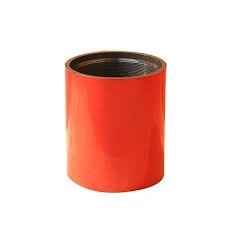- Afrikaans
- Albanian
- Amharic
- Arabic
- Armenian
- Azerbaijani
- Basque
- Belarusian
- Bengali
- Bosnian
- Bulgarian
- Catalan
- Cebuano
- Corsican
- Croatian
- Czech
- Danish
- Dutch
- English
- Esperanto
- Estonian
- Finnish
- French
- Frisian
- Galician
- Georgian
- German
- Greek
- Gujarati
- Haitian Creole
- hausa
- hawaiian
- Hebrew
- Hindi
- Miao
- Hungarian
- Icelandic
- igbo
- Indonesian
- irish
- Italian
- Japanese
- Javanese
- Kannada
- kazakh
- Khmer
- Rwandese
- Korean
- Kurdish
- Kyrgyz
- Lao
- Latin
- Latvian
- Lithuanian
- Luxembourgish
- Macedonian
- Malgashi
- Malay
- Malayalam
- Maltese
- Maori
- Marathi
- Mongolian
- Myanmar
- Nepali
- Norwegian
- Norwegian
- Occitan
- Pashto
- Persian
- Polish
- Portuguese
- Punjabi
- Romanian
- Russian
- Samoan
- Scottish Gaelic
- Serbian
- Sesotho
- Shona
- Sindhi
- Sinhala
- Slovak
- Slovenian
- Somali
- Spanish
- Sundanese
- Swahili
- Swedish
- Tagalog
- Tajik
- Tamil
- Tatar
- Telugu
- Thai
- Turkish
- Turkmen
- Ukrainian
- Urdu
- Uighur
- Uzbek
- Vietnamese
- Welsh
- Bantu
- Yiddish
- Yoruba
- Zulu
Compression Tubing Connector for Efficient Fluid Transfer in Industrial Applications
Understanding Compression Tubing Couplers A Comprehensive Overview
In the world of plumbing and piping, efficient connections between different segments are crucial for maintaining fluid integrity and system functionality. One of the key components utilized in these connections is the compression tubing coupler. This article delves into the significance of compression tubing couplers, their applications, types, and installation guidelines to provide a thorough understanding of this essential plumbing accessory.
What is a Compression Tubing Coupler?
A compression tubing coupler is a fitting used to connect two pieces of tubing or piping securely. It operates by utilizing a compression mechanism that creates a leak-proof seal around the tubing when tightened. This mechanism typically involves a compression ring or ferrule that deforms around the outer wall of the tubing, thereby securing it in place. Compression couplers are commonly employed in various industries, including water supply, gas systems, and refrigeration, due to their versatility and reliability.
Advantages of Compression Tubing Couplers
One of the primary advantages of compression tubing couplers is their ease of installation. Unlike welded or soldered connections, which require specialized skills and tools, compression fittings can be assembled with basic hand tools, making them a favored choice for DIY enthusiasts and professionals alike. Additionally, they are reusable, which means they can be disassembled and reattached to different tubing without compromising their integrity.
Another significant benefit is their non-invasive nature. Since they do not require any alterations to the tubing itself, compression couplers maintain the integrity of the material, reducing the risk of damage and ensuring a longer lifespan for the connected systems. Furthermore, these couplers can accommodate various tubing materials, such as copper, plastic, and stainless steel, allowing for flexibility in system design.
Types of Compression Tubing Couplers
Compression tubing couplers come in several types to accommodate different applications. The most common varieties include
1. Straight Compression Couplers These couplers are designed to connect two straight lengths of tubing. They are widely used in plumbing systems to extend existing piping runs.
2. Reducing Compression Couplers These fittings allow for the connection of two tubes of different diameters, making them ideal for transitioning between various pipe sizes.
compression tubing coupler

3. Elbow Compression Couplers These are used to create a 90-degree angle in piping systems, which is particularly useful in tight spaces where a direct connection is not feasible.
4. Union Compression Couplers Union couplers provide a detachable connection point, perfect for systems where disassembly may be required for maintenance.
Installation Guidelines
To ensure optimal performance and longevity of compression tubing couplers, proper installation is paramount. Here are some guidelines to follow
1. Preparation Before beginning installation, cut the tubing cleanly using a pipe cutter to create a smooth edge. Deburring the cut edge ensures a secure fit.
2. Assembly Slide the compression nut onto the tubing, followed by the compression ring. Insert the tubing into the coupler body and hand-tighten the nut.
3. Tightening Using a wrench, tighten the nut further while ensuring not to over-tighten, as this may damage the ferrule and lead to leaks.
4. Testing After installation, it’s essential to test the system for leaks by pressurizing it and inspecting the connections thoroughly.
Conclusion
Compression tubing couplers are invaluable components in various plumbing and piping systems. Their ease of installation, reliability, and flexibility make them a preferred choice among professionals and DIYers alike. By understanding their functionality, types, and proper installation techniques, users can harness the full potential of these fittings, ensuring efficient and secure connections in their plumbing systems.
-
Tubing Pup Joints: Essential Components for Oil and Gas OperationsNewsJul.10,2025
-
Pup Joints: Essential Components for Reliable Drilling OperationsNewsJul.10,2025
-
Pipe Couplings: Connecting Your World EfficientlyNewsJul.10,2025
-
Mastering Oilfield Operations with Quality Tubing and CasingNewsJul.10,2025
-
High-Quality Casing Couplings for Every NeedNewsJul.10,2025
-
Boost Your Drilling Efficiency with Premium Crossover Tools & Seating NipplesNewsJul.10,2025







